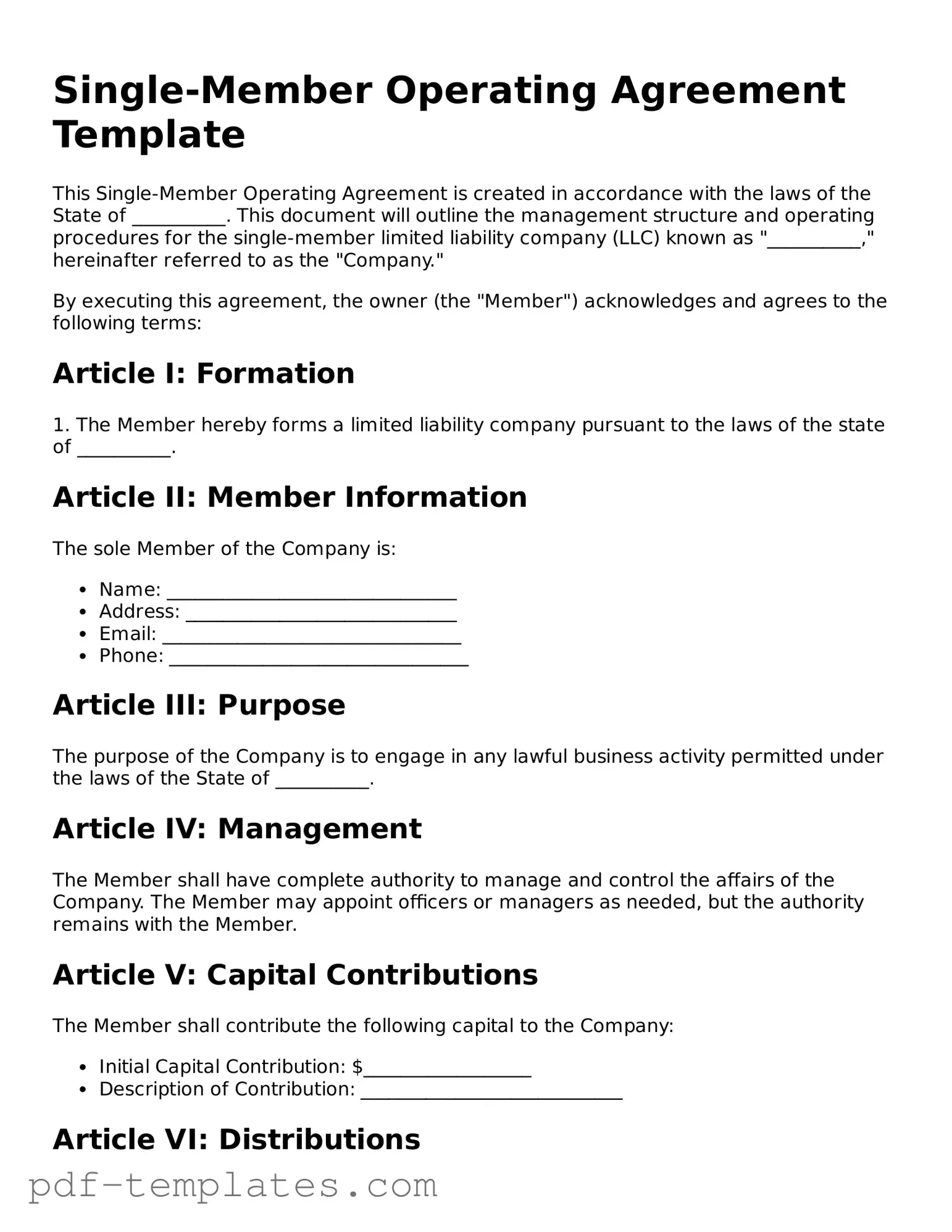A Single-Member Operating Agreement is similar to a Partnership Agreement in that both documents outline the structure and management of a business. While a Single-Member Operating Agreement focuses on a single owner, a Partnership Agreement details the roles, responsibilities, and profit-sharing among two or more partners. Both documents serve to clarify expectations and reduce potential disputes, ensuring that all parties understand their rights and obligations within the business framework.
Understanding the importance of these formal agreements is crucial for any business owner, particularly when considering the specific nuances of an LLC in Georgia. The significance of a well-crafted document, such as the Georgia PDF, cannot be overstated, as it provides essential clarity regarding the management and operational frameworks of a business, thereby minimizing potential disputes among members.
Another related document is the Bylaws for a corporation. Just as a Single-Member Operating Agreement governs the operations of a single-member LLC, Bylaws provide the rules and procedures for managing a corporation. Both documents establish the framework for decision-making, outlining how meetings are conducted and how the business will operate on a day-to-day basis, even though they apply to different types of business structures.
The Sole Proprietorship Agreement shares similarities with the Single-Member Operating Agreement, as both pertain to businesses owned by a single individual. While a Sole Proprietorship Agreement may not be as formal or detailed, it still serves to define the business's operations, responsibilities, and financial arrangements. Both documents aim to clarify the owner’s intentions and protect their interests, although a Sole Proprietorship does not offer the same liability protection as an LLC.
A Shareholder Agreement is another document that bears resemblance to a Single-Member Operating Agreement. While it is typically used for corporations with multiple shareholders, it serves a similar purpose by outlining the rights and responsibilities of the shareholders. Both agreements help manage the relationship between owners and provide guidelines for decision-making, although the Shareholder Agreement is more focused on the dynamics between multiple owners.
The Employment Agreement can also be compared to a Single-Member Operating Agreement. While the former outlines the terms of employment for an individual working for the business, the latter details how the business itself will be managed. Both documents are essential for setting clear expectations, whether for an employee's role or for the operations of a single-member LLC. They help prevent misunderstandings and establish a framework for accountability.
Operating Agreements for Multi-Member LLCs are similar as well. Although they apply to businesses with multiple owners, the structure and purpose align closely with those of a Single-Member Operating Agreement. Both types of agreements define the management, profit distribution, and decision-making processes within the LLC. The primary difference lies in the number of members, but the underlying principles of governance and clarity remain consistent.
Finally, a Business Plan can be likened to a Single-Member Operating Agreement in that both documents serve to outline the vision and operational strategy of a business. A Business Plan typically includes market analysis, financial projections, and marketing strategies, while the Operating Agreement focuses on the management structure and internal processes. Both are vital for guiding the business toward its goals and ensuring that the owner has a clear roadmap for success.
